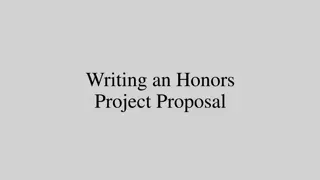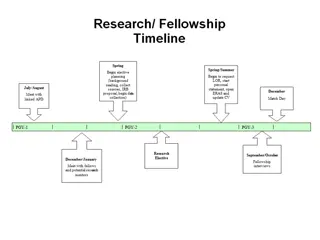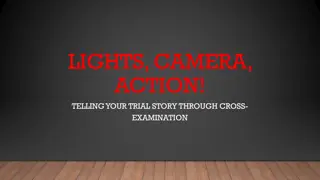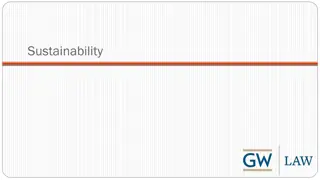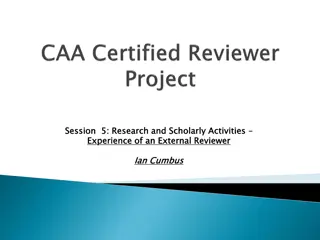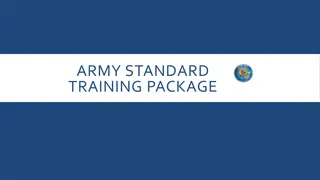DNP Scholarly Project Proposal Defense Highlights
Comprehensive overview of a DNP Scholarly Project Proposal Defense, covering key sections such as Introduction, Background, Problem Description, Evidence Synthesis, Theoretical Framework, Methods, DNP Essentials, and more. Get insights into crafting a strong defense presentation and acknowledging DNP committee members.
Download Presentation

Please find below an Image/Link to download the presentation.
The content on the website is provided AS IS for your information and personal use only. It may not be sold, licensed, or shared on other websites without obtaining consent from the author.If you encounter any issues during the download, it is possible that the publisher has removed the file from their server.
You are allowed to download the files provided on this website for personal or commercial use, subject to the condition that they are used lawfully. All files are the property of their respective owners.
The content on the website is provided AS IS for your information and personal use only. It may not be sold, licensed, or shared on other websites without obtaining consent from the author.
E N D
Presentation Transcript
{NAME OF PROJECT} DNP SCHOLARLY PROJECT PROPOSAL DEFENSE {Student Name} {Defense Date}
ACKNOWLEDGMENT OF DNP COMMITTEE Note: You will be able to acknowledge others in your final defense PowerPoint
OVERVIEW I. II. Introduction Background * Description of the Problem * Synthesis of the Evidence * Theoretical Framework * Project Purpose, Objectives, Expected Outcomes, & Project Type
OVERVIEW III. Methods * Method or Model that Aligns with the Project Type & Implementation Steps * Details of Measurement Plan (measures, tools, data monitoring plan, and data analysis plan & documentation of IRB process) * Project Timeline * Budget and/or Needed Resources IV. DNP Essentials V. References VI. Questions & Answers
INTRODUCTION Note: Introduction should include a brief description of the problem, presence of problem in clinical setting, approach in resolving the problem, and high-level description of the intervention In-text citations are expected.
BACKGROUND BACKGROUND
DESCRIPTION OF THE PROBLEM Note: A detailed description of the problem, including its significance and why the project is appropriate for the site where it will be implemented. Identify the clinical setting and participants. Provide data to support the existence of the problem at your site. According to your Moran, Burson & Conrad text, this section expands on the Introduction and leads to the development of a clinical question that may be presented using a PICO(T) approach In-text citations are expected.
SYNTHESIS OF THE EVIDENCE Note: Synthesis of the evidence supporting the intervention. This is accomplished by comparing key concepts from an evidence table to summarize what is currently known about the problem. In-text citations are expected.
THEORETICAL FRAMEWORK Note: The theoretical framework (informal or formal frameworks, models, concepts, and/or theories) used to explain the problem and any reasons or assumptions that were used to develop the intervention(s) In-text citations are expected.
PROJECT TYPE, PURPOSE PROJECT TYPE, PURPOSE, OBJECTIVES, & EXPECTED OUTCOMES & EXPECTED OUTCOMES Note: Here you identify the project type (EBP, QI, Policy, or Program Evaluation), Purpose, Objectives and Expected Outcomes Note: An EBP project involves implementation of an evidence-based intervention that is not currently in place in the clinical setting Note: A Quality Improvement project aims at improving identified outcomes and is generally site specific Note: A Policy project rigorously analyzes health policy for implementation Note: Program Evaluation uses an established method to evaluate programming and make recommendations to a healthcare organization , OBJECTIVES,
METHOD OR MODEL Note: Method or Model used that aligns with the project type For example, an EBP Project would align with models like the IOWA Model, ARCC, ACE, Stetler, JHNEBP Model, etc A QI Project would align with a Model for Improvement, like PDSA, Six Sigma, Lean, SPO and others. A Policy Project would align with Bardach & Patashnik or Weimer & Vining Models and others Note: Refer to your notes from NURS 780 to assist you as needed In-text citations are expected.
IMPLEMENTATION STEPS Note: What specific implementation steps will you take to implement the project implementation steps should align with the model you have selected
MEASURES/TOOLS MEASURES/TOOLS Notes to consider for the next few slides (from the Measurement Plan Guidelines): What will be measured? How often will you measure this? Who is responsible for the measurement? Describe the approach for the ongoing assessment of contextual elements that contribute to the success, failure, efficiency, and cost. Will you use a tool? Describe the validity and reliability. In-text citations are expected.
DATA MONITORING PLAN How will you monitor your data? Describe what methods you will use for assessing the completeness and accuracy of data. Describe your planned Data collection procedures. Will you be reviewing your plan with your project team, leadership, and organization regularly to ensure there is clarity about what you are trying to achieve? What information will you share with them?
DATA ANALYSIS PLAN How do you plan to evaluate the results/analyze the data? Describe the method(s) of data analysis for the data you will be collecting during the project implementation time (descriptive data, t-test, chi- square, logistic regression, etc). Describe how you will evaluate the outcomes identified by your clinical question as well as the strengths and limitations of the project. With whom will you share your results (unit team, unit leadership, hospital leadership, board members)?
PLANNED IRBPROCESS Note: Here you will note what IRB process your DNP Project will follow. For example, will your project be going through USC s eIRB process?, or through your clinical site s IRB process?, or both?
DNP ESSENTIALS Note: Address how the project incorporates applicable DNP Essentials. Be sure to address Essential 2: Organizational & Systems Leadership since nurses effectively and proactively coordinate resources to provide safe, quality, and equitable care to diverse populations.
REFERENCES Note: The references should reflect citations used in the presentation. Make sure that all citations and references are in APA format.
THANKS! & QUESTIONS Name Title Email Social



